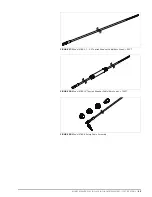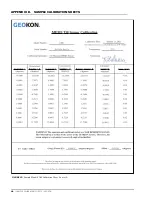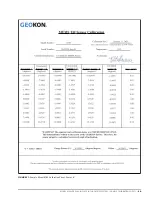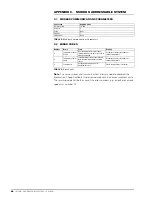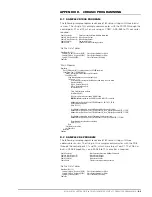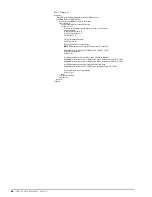
10
| MODBUS RTU PROTOCOL | GEOKON
3.
MODBUS RTU PROTOCOL
3.1
INTRODUCTION TO MODBUS
Model 6180 inclinometers use the industry standard Modbus Remote Terminal
Unit (RTU) protocol to communicate with the chosen readout method. As the
name suggests, Modbus was designed to work on what is known as a
bus
network
, meaning that every device receives every message that passes across
the network. Model 6180 inclinometers use the RS-485 electrical interface
because of its prevalence, simplicity, and success as a robust, industrial physical
layer.
More information about Modbus can be found at the following website:
http://www.modbus.org/specs.php
3.2
MODBUS RTU OVERVIEW
The Modbus RTU protocol uses packets (messages made up of multiple
sections) to communicate and transfer data between devices on the network.
The general format of these packets is as follows:
1.
Modbus Address (one byte) – The address of the specific device on the bus.
(Labeled on the sensors as #1, #2, #3, etc.)
2.
Function Code (one byte) – The action to be carried out by the slave device.
3.
Data (multi-byte) – The payload of the function code being sent.
4.
Cyclic Redundancy Check or CRC (two bytes): A 16-bit data integrity check
calculated over the other bytes in the packet.
3.3
MODBUS TABLES
The most recent sensor readings are stored in memory registers, read using a
Modbus command. Angle and temperature readings are available in processed
or precursor formats. Register addresses and formats are described in Table 2.
Note:
GEOKON
stores the gauge factor and offsets in the sensor during the
factory calibration process. Therefore, the outputs of the A- and B- axes are
both corrected values.
Table 3 shows device control addresses. Any non-zero value written to the
trigger address initiates a measurement cycle, updating the angle and
temperature measurement registers. Any anomalies detected during the most
recent measurement cycle produce a non-zero error code. Refer to Appendix C
for an explanation of these codes.
The flash password prevents unintended writes to the nonvolatile memory in
Table 4 and the preprogrammed device information in Table 5. Contact
GEOKON
for instructions.






















